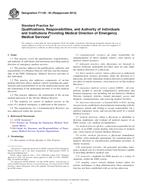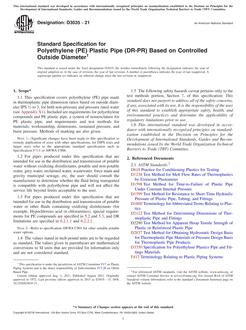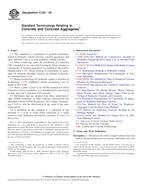1.1 This practice describes the nondestructive measurement of the dry film thickness of nonmagnetic coatings applied to the surface of ferrous metals using magnetic gages and the nondestructive measurement of the dry film thickness of electrically nonconductive, nonmagnetic coatings applied to the surface of nonferrous metals using eddy current gages. This practice is intended to supplement the manufacturers’ instructions for the manual operation of the gages and is not intended to replace them. It includes definitions of key terms, reference documents, the significance and use of the practice, the advantages and limitations of coating thickness gages, and a description of test specimens. It describes the methods and recommended frequency for verifying the accuracy of gages and for adjusting (optimizing) the equipment, describes a frequency for measuring the thickness of the coating(s) and lists the reporting recommendations.
1.2 These procedures are not applicable to coatings that will be readily deformed under the load of the measuring gages/probes, as the gage probe must be placed directly on the coating surface to obtain a reading. Provisions for measuring on soft or tacky coatings are described in .
1.3 Use of film thickness measuring gages on metal-filled coatings may produce erroneous results, depending on the type and amount of metal in the coating film. The user should consult the manufacturers instructions regarding the use of coating thickness gages on these types of coatings.
1.4 Coating thickness can be measured using a variety of gages. These gages are categorized as “magnetic pull-off” and “electronic.” They use a sensing probe or magnet to measure the gap (distance) between the base metal and the probe. This measured distance is displayed as coating thickness by the gages. Accordingly, these gages cannot distinguish the thickness of individual layers after they have all been applied. The thickness of each layer must be measured after it is applied. Even then, the thickness of the measured layer is the cumulative thickness of that layer and all layers beneath it, down to the base metal.
1.5 Gages which measure coating thickness using an ultrasonic principle may also be able to measure the thickness of coatings applied to metal surfaces. This practice does not address the use of ultrasonic coating thickness gages. Test Method D 6132 should be referenced for this application.
1.6 Coating thickness can vary widely across a surface. As a result, obtaining single-point measurements may not accurately represent the actual coating system thickness. This practice provides guidance for the frequency of coating thickness measurements, based on large areas of coated surface, on test panels and on small parts/components. The governing specification is responsible for providing the user with the minimum and the maximum coating thickness for each layer, and for the total coating system.
1.7 This standard does not purport to address all of the safety concerns, if any, associated with its use. It is the responsibility of the user of this standard to establish appropriate safety and health practices and determine the applicability of regulatory limitations prior to use.
Product Details
- Published:
- 08/01/2005
- Number of Pages:
- 7
- File Size:
- 1 file , 91 KB


